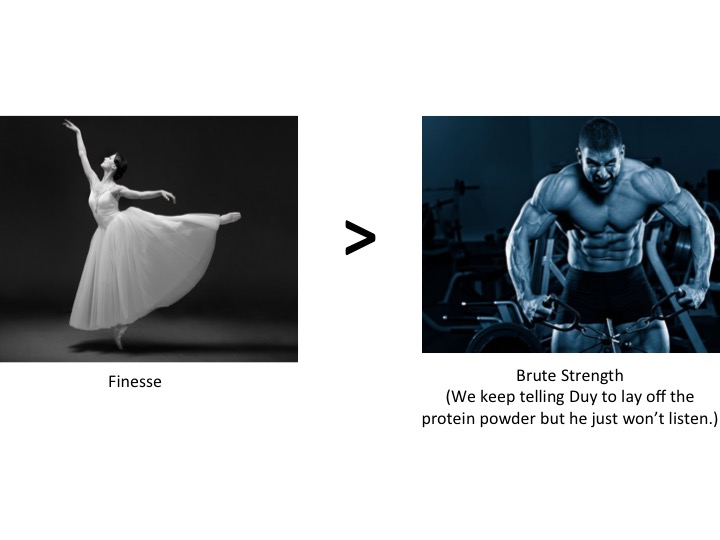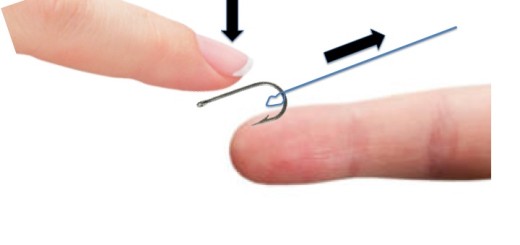The poor man’s guide to reducing shoulder dislocations.
So you landed on your arm or shoulder during football/basketball/paragliding/freediving/underwaterbasketweaving. And there was a big “clunk”. And now the shoulder is swollen, painful, looks really funky and you can’t really move your arm overhead and all you can think is “ooooh I think I popped my shoulder out.”
What to do?
Breath. Let us worry for you. That’s our job here at How2Med.
More likely then not, you have suffered a shoulder dislocation. Shoulder dislocations are the most common joint to be dislocated and often occur with contact injuries or falls during sports. The shoulder joint is composed of the glenoid and the proximal humerus; think of a golf ball (humerus) sitting on a tee (glenoid), except that attached to the golf ball is your arm. Because the glenoid is so shallow, your shoulder has an incredible range of motion, but this in turn can result in instability.
The humerus dislocates one of three ways: anterior, posterior, and inferior, with an anterior dislocation being by far the most common. We will discuss how to reduce (put the shoulder back in place) an anterior dislocation here, but in reality the other two types of dislocations can also be reduced similarly.
So, back to the underwaterbasketweaving pool. You now have two options:
1) Go to your local urgent care/ER. Probably the smartest choice, because xrays can confirm if a dislocation is present, and there are A LOT OF PAIN MEDICATIONS TO MAKE YOU FEEL WARM AND TINGLY INSIDE.
If you choose option 1, then boo you, you wuss. This post is directed at the manly men and the womanly women who don’t need no stinking pain medication (or, more likely, do not have immediate access to professional care).
2) Reduce the damn dislocation yourself and resume weaving like no other.
If you choose option 2, then there are multiple ways to proceed, depending on if you are alone or with other people. There are a couple important things to keep in mind. First, the shoulder will feel painful but not unduly terrible for a short period of time after dislocation. This is the time to try a reduction! After the shoulder becomes swollen and stiff and the surrounding muscles start spasming, reducing a dislocation on the field becomes infinitely more difficult. Second, reducing the shoulder is about gentle constant traction. You want to the tire the muscles out and allow the humerus to slip back in place. Finesse is more important than brute strength. Finally, you can tell when the shoulder reduces when you feel a clunk and are able to move your arm past horizontal.
If you are alone, then there are two different ways. The second method begins with finding a weight of at least 10-15 lbs. Find a table and lay belly-down with your arm and shoulder over the side. Grab the weight with your hand. And then relax and let the weight due its job. This may take 10 or 20 minutes but be patient. Eventually, gravity will win, the weight will tire out your muscles, and the shoulder will self-reduce. A variation of this method is to sit down on the ground with your knees bent up against your chest. Grab around your knees with both hands, interlace your fingers, and then slowly lean back. Like with the first method, this provides gentle but gradual traction. When your muscles become tired, the shoulder will self-reduce.
If you are with friends, then there are even more effective maneuvers. Find a table and lay belly-up, again with your arm and shoulder over the side.
Relax and rest your arm at your side. Have you friend bend your elbow to 90 degrees and apply constant downward traction to the arm in line with the body until the shoulder starts to relax. Then, while continuing to apply the downward traction, rotate the arm outwards (at the elbow) as in the picture below. This is often enough to pop things back in place.

image: medscape.com
If this doesn’t work, have your friend hold your forearm firmly and apply constant traction. The arm shouldn’t be pulled perpendicular to the shoulder or in line with the body, but somewhere in between. It also helps to have counter-traction, so if possible have another friend hold your body or chest from the other side of the table to prevent you from getting pulled off and dislocating the other shoulder!

image: gallery4share.com
If you are lucky and you feel that clunk, then hooray! You just save yourself a significant amount of time and $$$. I would still recommend going to your doctor’s office to get checked out, but this doesn’t have to happen emergently. Until you see your doctor, try to find and keep your arm in a sling. Definitely don’t abduct and externally rotate the arm (ie a motion similar to giving a high-five) because that normally is the position of dislocation and re-dislocating would be bad news bears.






Your Thoughts